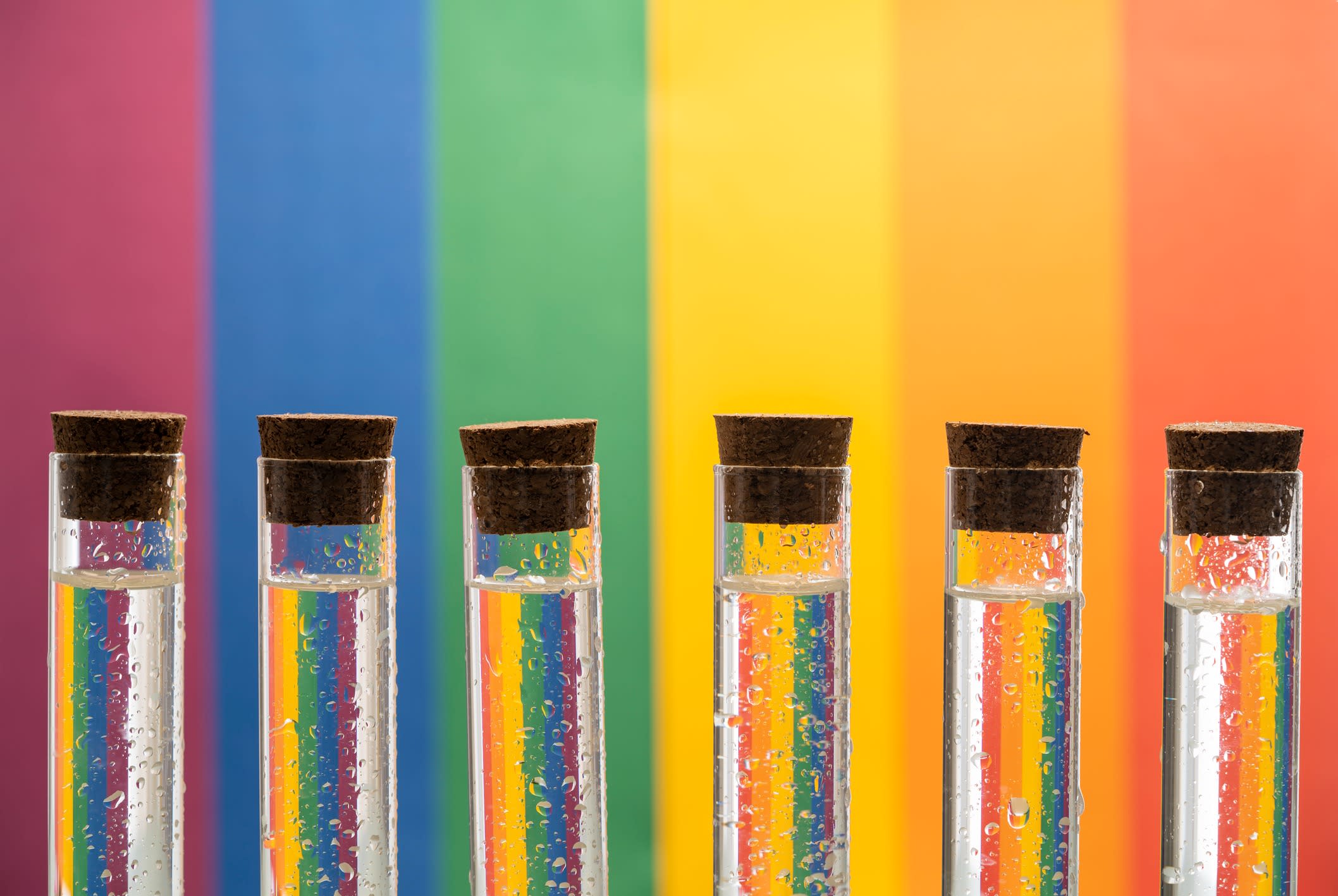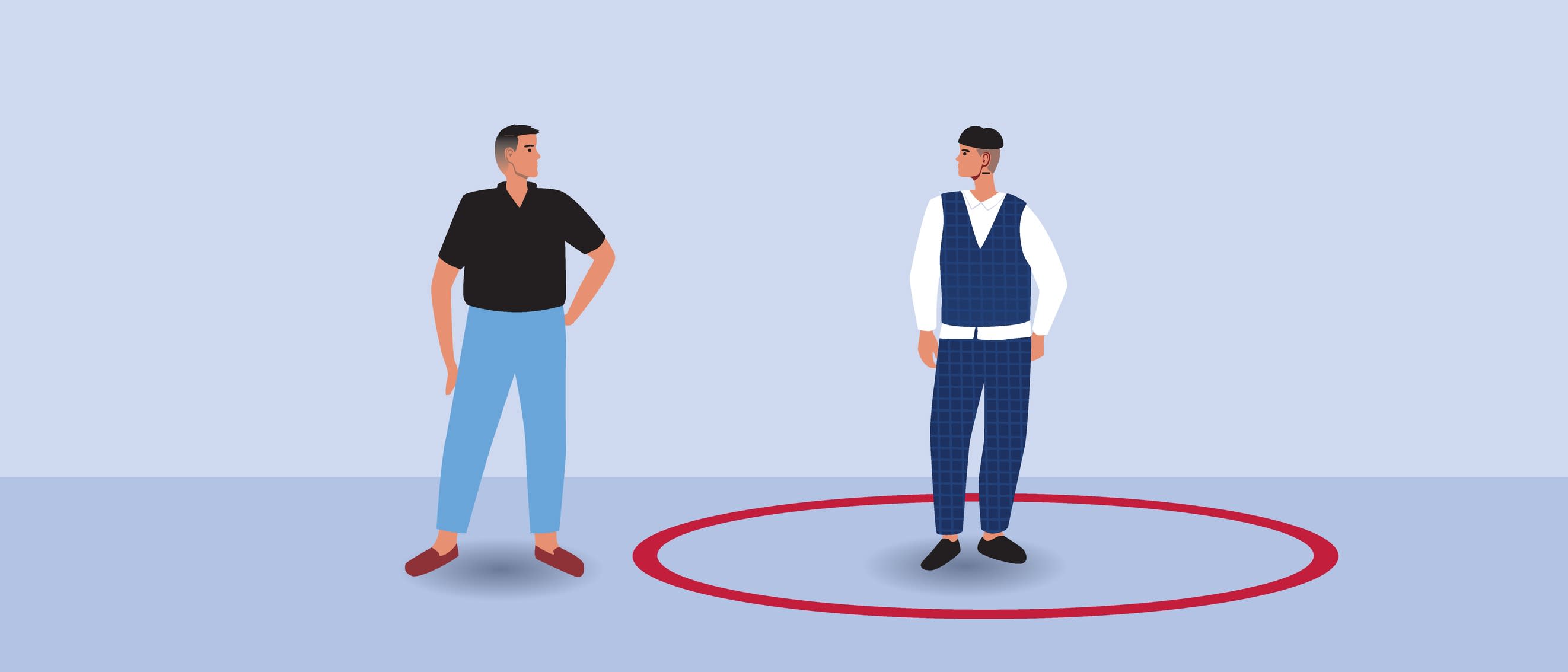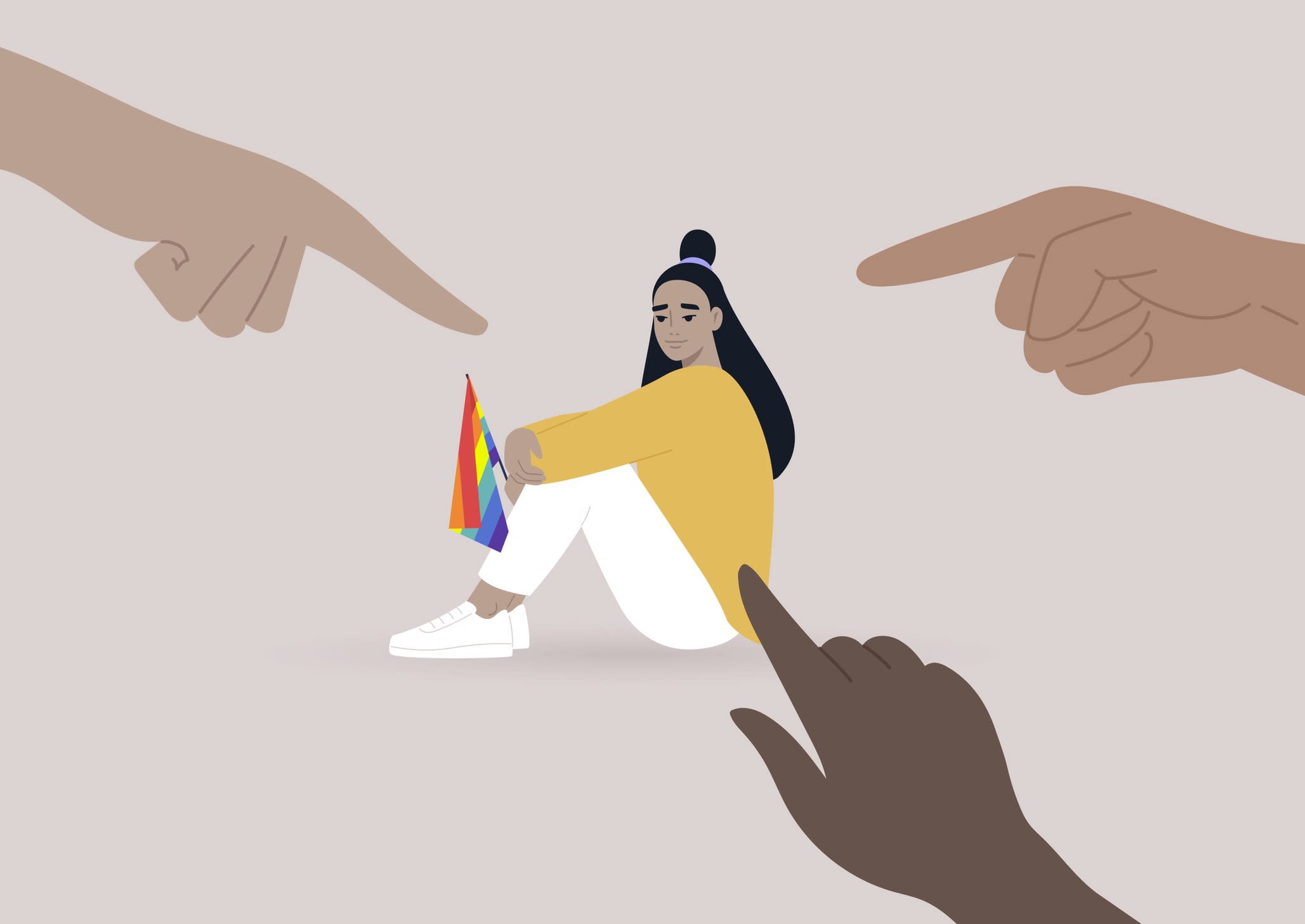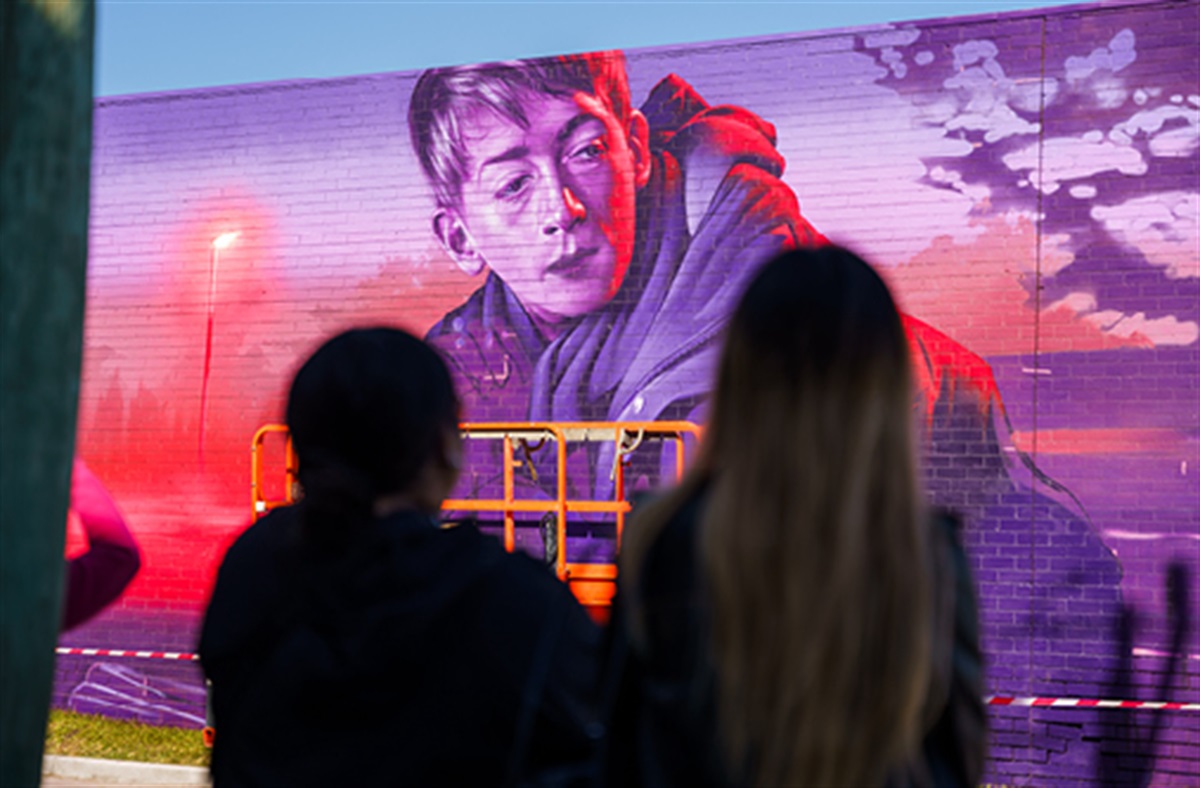A major US study last year unearthed a set of uncomfortable truths about the crucially important STEM (science, technology, engineering, mathematics) field, finding that LGBTQIA+ professionals were more likely to experience career limitations, harassment, and health difficulties compared with their non-LGBTQIA+ peers, and were more likely to leave.
Rhiannon Grant
PhD Candidate, Department of Immunology and Pathology, Central Clinical School
Jessica Borger
Lecturer and Graduate Course Coordinator, Central Clinical School
Zhoujie Ding
Postdoctoral Research Fellow, Department of Immunology and Pathology, Central Clinical School
We think the extent of this professional devaluation for LGBTQIA+ people in STEM needs to change, and that starts with queer visibility. (We use the word queer as an umbrella term to describe all the diverse identities of people within the community).
The US study surveyed 25,324 STEM professionals, including 1006 LGBTQIA+ people, finding that LGBTQIA+ professionals were significantly more likely to have had their colleagues devalue or discount their STEM expertise, with 20.2% more agreeing they had experienced devaluation compared to non-LGBTQIA+ peers.
More than 32% of LGBTQIA+ professionals had experienced social exclusion, 10% higher than their non-LGBTQIA+ peers. LGBTQIA+ professionals were 30% more likely to experience harassment in the past year, and 30% more likely to have experienced depressive symptoms in the past year.
LGBTQIA+ professionals were 22% more likely to be stressed or nervous from work.

Additionally, a 2019 report by the Institute of Physics, Royal Astronomical Society, and the Royal Society of Chemistry detailed three key signifiers of an exclusionary workplace, including:
- inadequate policies and support available for LGBTQIA+ staff
- incorrect use of pronouns for LGBTQIA+ employees
- casual and insensitive humour, even without malicious intent.
Recently, our group from Monash University’s Central Clinical School interviewed two leading researchers in LGBTQIA+ equality in STEM to try and find out more about why professionals identifying as such experience more career limitations and workplace health and wellbeing issues than non-identifying peers.
The school’s Gender, Equity, Diversity and Inclusion committee interviewed Dr Catriona Nguyen-Robertson, an immunologist and science communicator from the University of Melbourne, and an OutforAustralia 30 Under 30 award-winner; and Dr Matthew Sinton, the founder of the STEMVillage, and author of publications in The Lancet and Immunology and Cell Biology highlighting the need for visibility of LGBTQIA+ researchers in STEM. Dr Sinton is a postdoctoral researcher at the University of Glasgow.
The committee believes active acknowledgement of being a queer-friendly workplace, and supporting opportunities for allies to learn, are integral to ensuring LGBTQIA+ people in STEM feel welcomed, and can be confident knowing that in choosing a career in STEM, they can be themselves.
Friday, 18 November, is International Day of LGBTQIA+ People in STEM, celebrating diversity in science, technology, engineering, and mathematics. Students, academics and professional staff who are lesbian, gay, bisexual, trans, queer, intersex, asexual (LGBTQIA+) in this community face barriers that remain invisible to those outside the community -which is why more needs to be done across academia.
This is what we’ve learned.
Academia largely remains a cis-heteronormative space
The assumption still remains that when discussing a partner with co-workers, the partner will be of the opposite gender, defining the heteronormative culture of STEM in academia.
Dr Matthew Sinton, who may be perceived as a heterosexual man, discussed his experience of revealing his identity to co-workers when mentioning his husband for the first time.
Simply mentioning his partner contributes to underlying stress when, he says:
“I am going to throw out a gender here that people might not be expecting.”
Challenging this binary preconception needs to come from the workplace as a whole, and can’t solely be the responsibility of members of the LGBTQIA+ community.
Dr Nguyen-Robertson says the sense of invisibility gets to people as well, “and it contributes to this sense of uncomfortableness or awkwardness and fear of coming out in your workplace, because you don’t know if this is a safe space”.

She spoke to us of her experience coming out as bisexual to her lab.
“When I first joined the lab, I passed as straight. I do remember bringing it up in a pub setting. I was told by a researcher: ‘Oh, maybe now isn’t the right time for this conversation?’ Well, when is?
“In a safe working culture, people should not need to ask themselves when is a good time to come out. If allies leave preconceptions behind and embrace a diverse workplace, LGBTQIA+ researchers in STEM can work knowing they’re accepted and embraced for who they are. This should be the norm.”
Microaggressions contribute to reduced retention rates in STEM
Both Dr Nguyen-Robertson and Dr Sinton say that, likely because they’re cis (the gender assigned at birth matching the gender they identify with and present as) and are straight-passing, they don’t experience microaggressions – subtle insults, hostility or prejudices – targeted at them in their day-to-day life.
However, trans and gender-diverse people are more likely to experience microaggressions, living day-to-day feeling the constant need to brace for offence.

Within STEM, these microaggressions contribute to reduced retention rates of transgender and gender-nonconforming students.
In the often high-pressure STEM environments, microaggressions are an additional challenge to those who are trying to succeed in a setting where they’re already a minority.
“Imagine you go to a conference,” says Dr Sinton, “and you have two people presenting similar talks of opposing views, and one of them presents as a standard white male, and the other one assigned male at birth is non-binary, maybe wears makeup, has nail varnish. I would put money on the fact that people would take the cis-gender-male presenting person seriously, and not everybody, but a definite proportion of the audience, would take that person seriously, and not the other one.
“I think that just highlights those biases that are still in place in STEM. You know that extends to things like hiring practices, to a promotion within departments.
“For example,” he says, “people who are transitioning, people who come out while they’re within the workplace, have to then deal with that. So for me, that would be one of the major barriers.”
This illustrates the need for allies to advocate, raise awareness, and increase their own understanding of issues affecting the LGBTQIA+ community, to create a safe and respectful environment for LGBTQIA+ people.
Creating a safe place can be simple
Dr Nguyen-Robertson and Dr Sinton both say small things make a big difference in showing support.
For example, they recognise that creating a safe place can be simple, like displaying or wearing a rainbow, which can help increase visibility without having to talk,” says Dr Sinton.
Without these things, Dr Sinton says invisibility increases background stress levels – “and I think a lot of the time we’re not conscious of it, of how it kind of creeps up on you, that little bit of stress and discomfort”.
Allies need to be actively conscious about the presence of LGBTQIA+ people in the STEM community, and overcome unconscious biases. Talking about your partner with co-workers shouldn’t be a difficult thing to do, for anyone.








